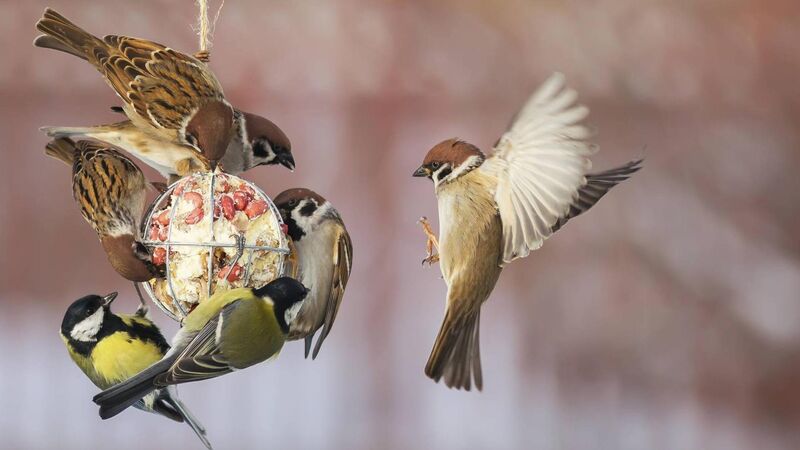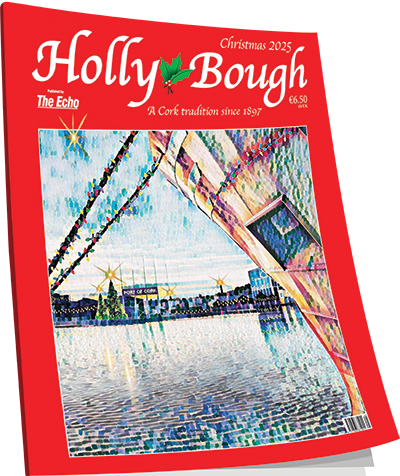Want to know what birds are tweeting in your garden? A simple app can help...

Tits and sparrows sit on a garden bird feeder. Picture: Stock
IT’S that time of the year when many of us get reacquainted with the great outdoors and the wonders of nature after a bellyful of darkness and cold.
Some of us head to the local park for our springtime nature fix, or further afield for a hike. Others just potter around the garden, allowing nature’s balm to soothe them.
Wherever we go, whenever the rumble of traffic has died away, we all get a kick when we hear the distinctive sounds of the season of rebirth and renewal in all its glory.
I’m talking about birdsong, the tweets and chirrups of our feathered friends as they spread their wings after the dark days of winter, broadcast their arrival from warmer climes, warn off other birds, or show off in the hope of attracting a mate.
The songs and calls of birds are an instant mood-enhancer, and research has shown they have a positive effect on our mental health.
A study last year by academics from King’s College London found that everyday encounters with birds boosted the mood of people with depression, as well as the wider population, and improved mental wellbeing.

Welcoming the study, Adrian Thomas, the author of the UK’s Royal Society for the Protection of Birds’ Guide To Birdsong, said most people described their reaction to birdsong as ‘joy’.
He explained: “Birdsong would have once been the natural soundtrack to all human lives, and I do think it is embedded somewhere deep within our psyches. It is associated with spring and renewal and good times coming.”
Few would argue with that.
But, unless you’re an expert in ornithology, or at least an enthusiastic amateur, many of us will struggle to name the birds from their songs alone.
Is that songbird in the bush a blackbird or a thrush? The harsh caw-ing sound on the roof... is it a crow or a magpie?
Often, even when we can both hear and see a bird, we still might not know if it is a blue or a great tit, a greenfinch or a chaffinch.
But that need no longer be the case, because this week I stumbled upon a marvellous app which does all of that for you, richly enhancing the experience of anyone strolling in their garden or in a nature haven further afield.

The app is called Merlin Bird ID and it is completely free to download from the App Store or via Google Play Store.
Once you have it, simply take it to an outdoor location, press record - and, in real time, instantaneously, the app will listen to all the birds’ songs and calls, and identify them for you by showing you pictures and data about them.
You can play the recording back later, and the app will highlight a particular bird when its song is heard.
We tried the Merlin Bird ID app here in our garden one morning this week, and were shocked by the number of different species it detected which we had never seen. It picked up 15 bird calls in just a few minutes, and we identified another eight in the course of the week. The graphic here lists all 23 of them.
Among them were birds you would expect to hear, such as the robin, jackdaw, and chaffinch. But we were amazed that the app picked up a willow warbler, a ringed plover, and a greenshank.
We are located in a rural area by the River Lee, and there is plenty of tree cover around, so we have always been aware that we have a fine variety of birds on our doorstep, from aquatic to garden and tree species.

We are a house of nature-lovers and have binoculars handy by the window. We also put out bird feeders in winter and can usually identify your common or garden birds such as finches and tits.
But the bird app has taken it to a new level. It removes all of the guesswork, and tells us there are many more birds in our garden which are shy and rarely seen by the naked eye.
It also means we can look into the habitat of those birds that are audible but not visible, and see if we can now spot them.
The Merlin Bird ID is the brainchild of the Cornell Lab of Ornithology in Ithaca, New York, and started off as an identifier of bird species using photos.
Initially, a user would take a snap of a bird they wanted to identify, upload it to their phone, and the app would roam its memory banks looking for a suitable match. That function remains on the app.
However, the Merlin Sound App is a newer innovation which launched in the U.S in 2021 and expanded to Europe last year.

It records the sounds of birds in a location and lists the species using computer analysis to find the best matches. Its technology is constantly being updated and the Merlin experts say they need at least 100 sample sounds of each bird before they add it to their list.
Once the app has identified a bird, either through sight or sound, it shows you photos of it and provides data on the species, their appearance, behaviours, and habitat preferences.
You can also keep permanent lists of all the birds you identify on the app, enabling you to add to it as you visit different locations.
The app is interactive and uses its million-plus members to increase its knowledge worldwide.
Every time someone logs a bird ID by clicking ‘This Is My Bird’ on the app, Merlin saves the results to compute into future searches. So, the app will continue to get smarter as more people use it.
Explaining their no payment ethos, the Cornell Lab of Ornithology say: “It’s our mission to advance the understanding and protection of birds, and to make them more accessible to people.
“Once people can identify birds, a whole new world opens up to them. Suddenly they want to identify another and another.
"And they’re learning more about the birds they identify, such as where they live and what they need to survive. People are more motivated to protect the things they know and care about.”
There you have it. A brilliant resource that’s as free as a bird... and it sure beats spending all day getting worked up on Twitter!







 App?
App?







